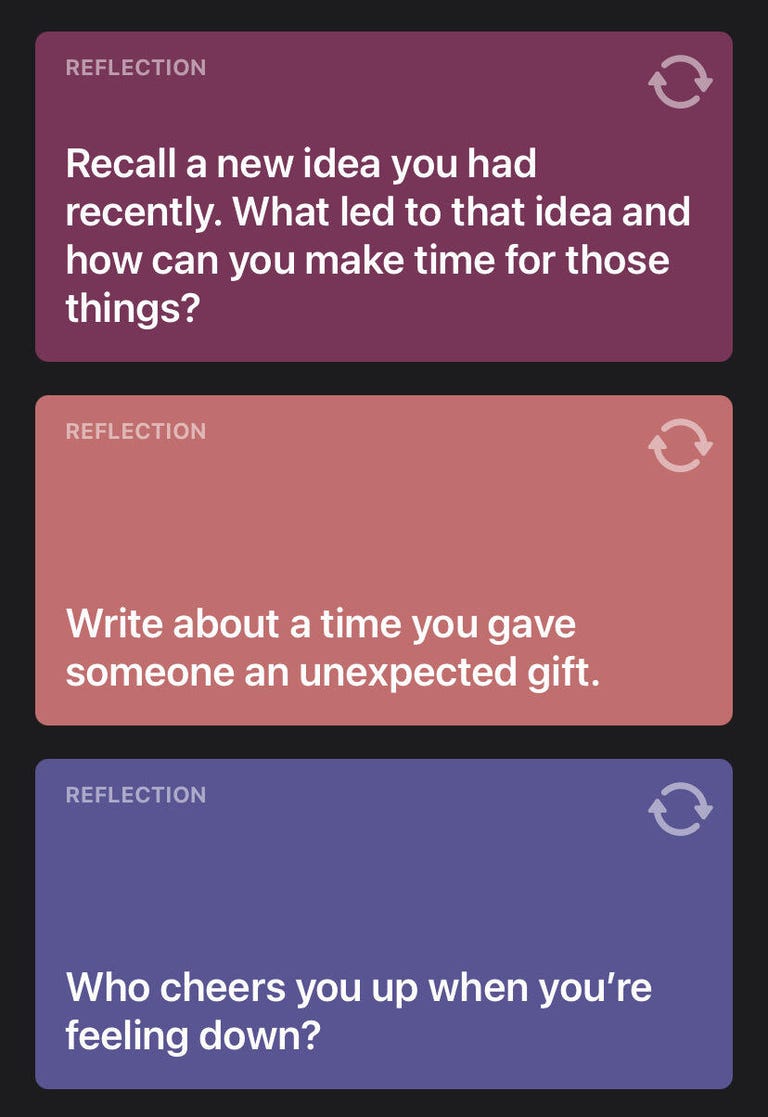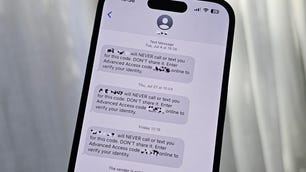Apple has dropped iOS 17.2 for the iPhone, and it comes with one of the most eagerly awaited apps in recent memory: Journal.
Have you noticed that our iPhones have been trying to fix us? This little gadget in our pocket keeps track of so many aspects of our life, including our schedules, communication, money and health. It’s smart enough to suggest how to optimize our time spent using the device, remind us when our music is too loud, or point out how much time we spend looking at its pretty screen while scrolling through TikTok.
Now Apple has another major selling point: Your iPhone can help you be a better you. Its new Journal app is designed to help you reflect and practice gratitude by writing about moments of your day. I’ve been using it for the past month, and there are aspects of the app that aren’t what I expected.
Apple announced Journal back in June at WWDC. It’s part of iOS 17, but unlike other features, it needed more time to bake and wasn’t included in the September release of the new iPhone software.
I’ve been testing it for a month, with the public beta version of iOS 17.2, and the Journal app is far more than just a place to jot down thoughts on blank pages. I have plenty of blank journals that I never write in (even though I keep buying them). Obviously, when I’m burnt out after a long day, I don’t grab my paisley Moleskine.
Instead, I do what any sane person does: scroll on my iPhone while in bed — so it makes sense to journal at night on my phone. I open the Journal app and click to make a post. There are personalized suggestions, called Moments, that give me something to write about. And when I say personalized, these suggestions from my iPhone get real detailed.
Reflections, suggestions, and that time I went to Wendy’s
Journal pulls from my recent activity, showing photos I took, people I texted, places I visited and music I’ve listened to. If I ever actually logged a workout on my Apple Watch, it would show me that, too. It also weaves in photo memories from years ago. There are also Reflections that present prompts, ideas and questions. The prompts aren’t cheesy, and I find them interesting, which is, of course, the idea. These thought exercises help me zoom out to see the bigger picture.

Scrolling through my suggestions, there’s one of a Friday night hangout with friends, a photo of my son when he was little from three years ago, a question prompt, and a photo of my family picking out a Christmas tree from this past weekend. I see photos of my dad visiting New York in 2018, and I get a reminder that I ate at a Wendy’s last week. So not every moment is worthy of a post, but the suggestions give you little flashbacks that jolt your brain into replaying memories.
Some suggestions can be strange. Journal knows that I went to a specific Wendy’s and wants me to write about it — clearly iPhone knows a lot about my life and burger consumption habits. Apple says all of this is being done while protecting your privacy. The suggested posts from your activities stay inside your iPhone, and Apple can’t see them. The same limits apply to any third-party journal apps that use Apple’s journal suggestion tool API in their software.
Apple says no one but you can access your Journal. Even if your phone is unlocked and you hand it to someone, they can’t get into the app, because you can lock your Journal. I set it to unlock with Face ID. If you sync it to iCloud, it’s stored with end-to-end encryption.
My Journal always hits me with photo memories of my kids, trying to give me a dopamine hit with nostalgia. Like, “Hey, remember this cute moment?” My problems today aren’t so big if I think about nice stuff that happened in the past. It’s like having a therapist guide you to reset your perspectives.

Imperfect memories and limits
There are some hiccups. For example, once I got my nails done early in the morning and the app assumed I was having breakfast at a restaurant next door. I suppose it’s OK if it’s not perfect since it’s just meant to be a starting point for your dear-diary moment. You don’t have to write a post for every suggestion.
Journal lets you add photos, audio or video to your entries, but there are limits. For instance, video files need to be under 500 megabytes, so I couldn’t add a two-minute video that I shot in 4K. Since your entries are stored locally on your iPhone, limiting the size of your media files in Journal helps save space.
On the surface all this makes sense: “Yeah, you got a fancy digital diary!” So what I’m about to say next may sound weird. There’s no way to share any of these posts. And it isn’t just no sharing, it’s no searching. I can’t go, “Oh yeah, I remember that nice Halloween post I made, let me pull that photo up and share it.” Nothing is shareable. You’re crafting what look like classic Facebook posts, but they’re just for you. No one will know about them.
Too many years being on social media have messed me up, so I can’t fathom making content that no one else will see. I realize I have to rethink a few things about the value of writing about my memories.
The lack of a search tool in the Journal app is a bummer, too. Searching is just scrolling back. The best you can do is bookmark some of your favorite posts, because then you can narrow down entries by filtering what’s bookmarked, or having it show you just photos, audio posts or locations. I guess scrolling is kind of like flipping through the pages of an actual handwritten journal. But then what’s the point of journaling digitally?
There’s also another wrinkle that took me a while to realize. Journal is just another way to lock you into iOS and the Apple ecosystem. Imagine that a year goes by and you made hundreds of posts, all of which are stored on your iPhone. Would you just throw away that diary and switch to Android?
I’m not the only CNET staffer who’s been testing out Journal in beta. Patrick Holland, CNET managing editor and iPhone reviewer, has also been playing with it. Here are his first impressions:
Journal’s secret sauce is triggering your emotions
Like Bridget, I’ve enjoyed the Journal app so far. But sadly, I haven’t had any prompts to relive that great Frosty-and-fries experience I had at Wendy’s. What surprises me about Journal is how un-Apple it is. The star of the app is the suggestions feature, and how easily a suggestion can trigger a memory or make me relive a moment that at the time seemed mundane, but now prompts a bunch of feelings.
Using Journal reminds me of the analog experiences I’ve had doing creative writing exercises or following the book The Artist’s Way.
What Journal does best is gives me a space for my feelings and a way to organize my thoughts. The suggestions are very personal and private. One made me exit the app and call my family, while another made me wish I still could talk to someone who had died.
Final thoughts on Journal
I agree with Patrick and think Journal is worth trying out. Sure, there are things that could be tweaked, like adding a way to search for a post. But if the job of Journal is to help our mental health and fix some of the busy-brain problems we have in this day and age, it does that. It made me think about what really matters and offered a way to quickly switch my mindset. I don’t use Journal every night, but even opening the app and looking back helps put time into perspective.
CNET’s Patrick Holland contributed to this report.






